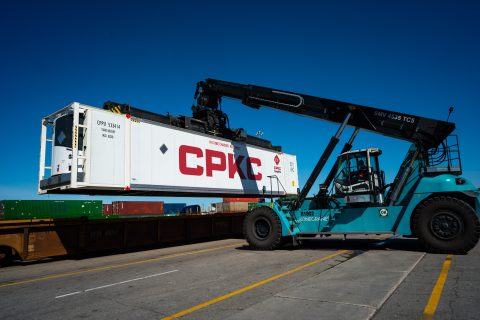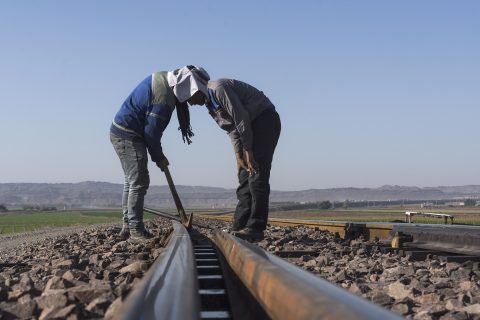Gotthard accident: freight traffic might partially restart next week

The impact of the freight train derailment that occurred inside the Gotthard Base Tunnel on Thursday 10 August is expected to hit the rail industry quite significantly. The situation is slightly better for freight trains, which, as the Swiss Federal Railways (SBB) said, are expected to run again in the single-track undamaged east tunnel as of Wednesday 23 August.
The closure of the Gotthard Base Tunnel is a thorn in the side especially for combined transport traffic, which cannot be diverted via the old panoramic route due to profile differences. Some of the combined transport traffic will still be re-routed through the Lötschberg-Simplon axis. For example, SBB specified that its international freight subsidiary SBB Cargo International can transfer around 30 per cent of its combined transport services there.
The partial reopening of the Gotthard Base Tunnel is possible because the door that was broken by the derailed wagons was replaced with a mobile gate, SBB specified. This, however, cannot be considered as a permanent solution. The door in question is the one connecting the two tunnels at the Faido interchange, providing “fire protection and separates the air circulation between the two tunnel tubes”, as SBB explained. Other than replacing the door, it is necessary to restore signal box monitoring.
Full reopening not expected before 2024
“Detailed investigations revealed that the extent of the damage was significantly greater than initially estimated”, SBB pointed out. According to their report, over eight kilometres of tracks and 20,000 concrete sleepers need to be replaced, which will take months. As the company specified, “both tunnel tubes will probably be available again for rail traffic to a limited extent at the beginning of 2024”. Clean-up operations have started, but the 16 derailed and damaged wagons are still inside the tunnel.
Accident dynamic is still unclear
The train was coming from Italy and it was made up of 30 wagons coming from five different locations. The convoy was taken over by SBB Cargo in Chiasso, on the Swiss border with Italy. This takeover also included train inspection procedures, which did not show any irregularities, SBB stated. The train was checked again in Bellinzona, a few kilometres from the tunnel’s southern entrance.
Here, SBB underlined that “a stuck brake on a freight wagon was discovered and released. It was not the car that is believed to have derailed first. After the fault was rectified, the train was released to continue its journey”. The company mentioned that the convoy also passed through the automatic control devices between Bellinzona and the entrance of the tunnel, where no alarms were triggered.
Also read:





